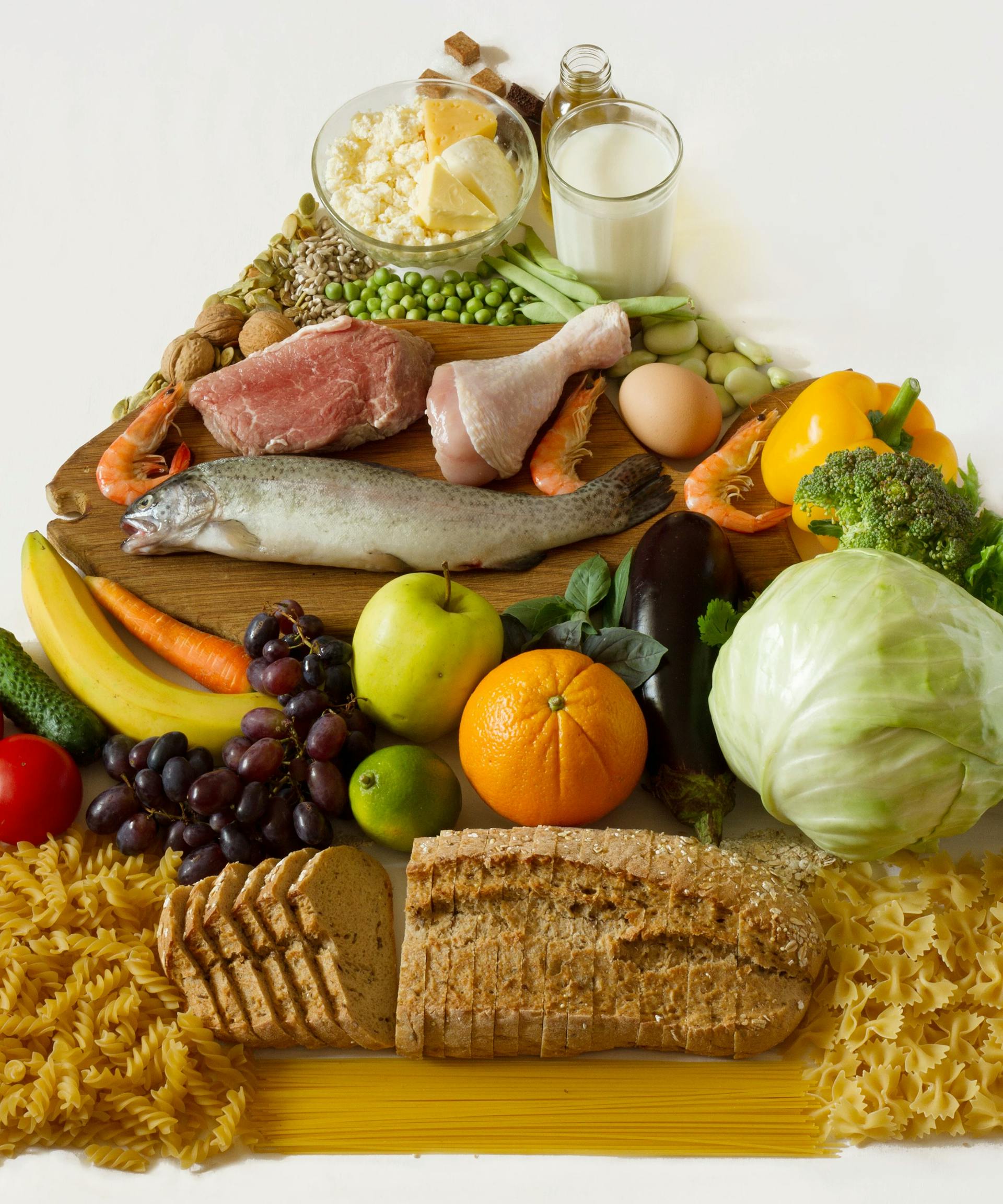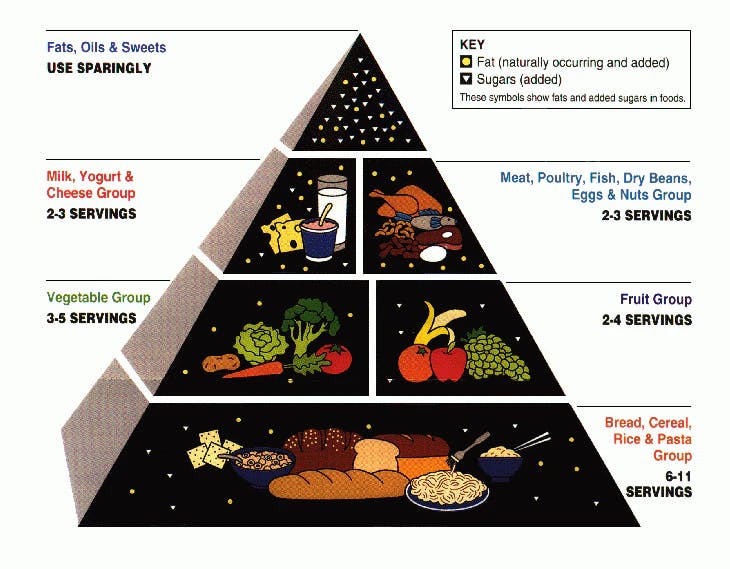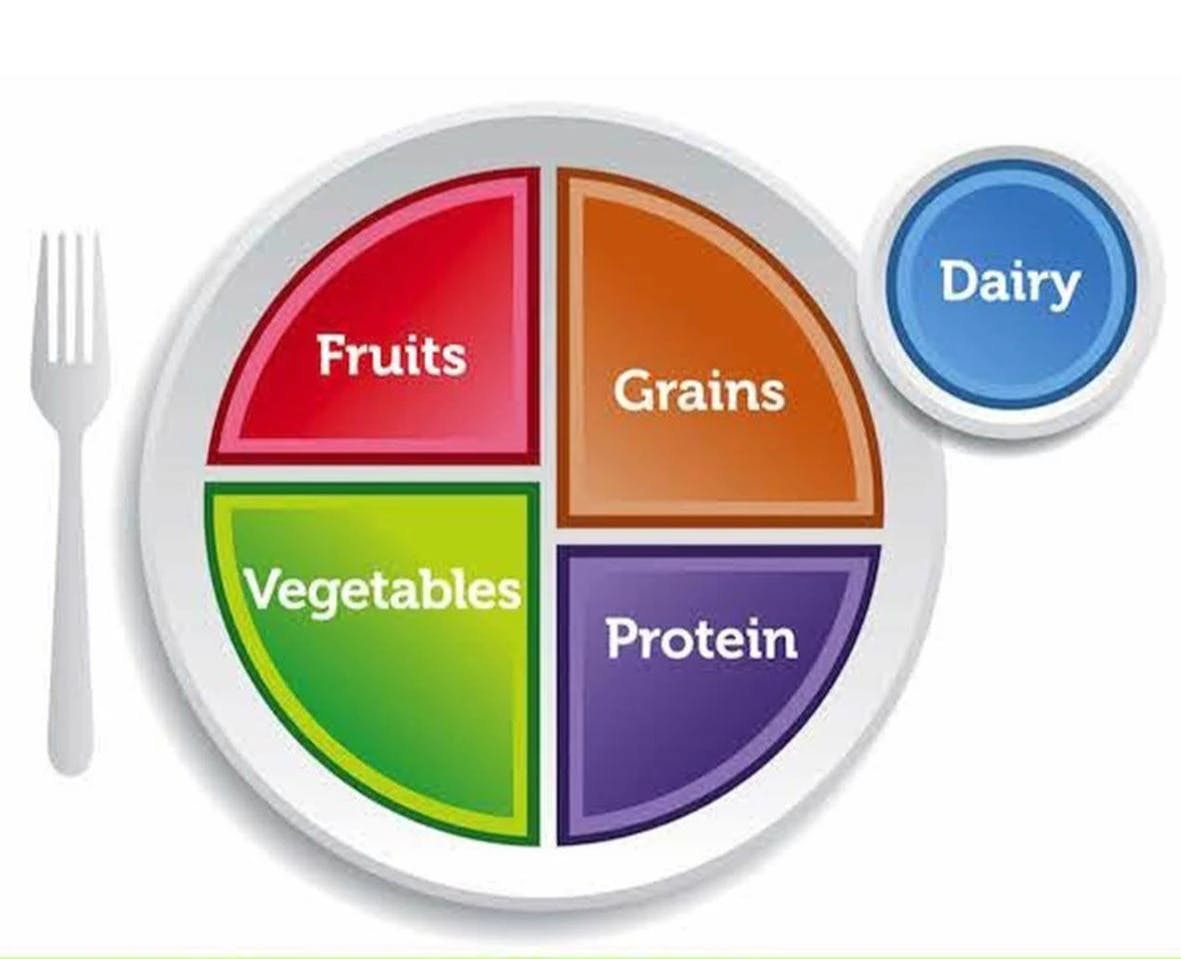The Food Pyramid Was Never About Keeping You Healthy. It Was About Making Corporations Money
Ever wondered why even with suggested dietary guidelines (made by government entities like the USDA), America still struggles overwhelmingly with obesity? If you’ve guessed that the food pyramid has something to do with it, you’re on to something. Essentially, the now-debunked food pyramid many of us grew up on and were raised with encouraged us to be unhealthy.

In fact, the food pyramid was never really about making sure our kids got the recommended amount of fruits and vegetables, but about money – as so many things ravaged by government involvement are.
The Food Pyramid Controversy
The food pyramid as we know it today is actually a pretty universal concept. Though the food pyramid we know in the U.S. has since been replaced, recommended dietary guidelines can be found in communities and school curriculums across the globe in varying diagrams and graphics.
In the 1970s, the U.S. started to notice that obesity was on the rise and decided to do something about it. But, the USDA, the governing force behind the food pyramid, let lobbyists and politicians with their own agendas dictate the standard, and a long history of problematic dietary guidelines was then born.
The USDA let lobbyists and politicians with their own agendas dictate the dietary guidelines.
Ever heard of Dr. Luise Light? If you haven’t there’s a good reason for that. Dr. Light was the original nutritional expert behind the creation of the food pyramid, but by 1992, when the notorious food pyramid we now know to be unhealthy was released, her recommendations and research had been tossed aside, due to the influence of the food lobby.
Dr. Light’s initial suggestions, as well as the subsequent changes made by the USDA, are best explained in her own words: “Where we, the USDA nutritionists, called for a base of 5-9 servings of fresh fruits and vegetables a day, it was replaced with a paltry 2-3 servings (changed to 5-7 servings a couple of years later because an anti-cancer campaign by another government agency, the National Cancer Institute, forced the USDA to adopt the higher standard). Our recommendation of 3-4 daily servings of whole-grain bread and cereals was changed to a whopping 6-11 servings forming the base of the Food Pyramid as a concession to the processed wheat and corn industries. Moreover, my nutritionist group had placed baked goods made with white flour – including crackers, sweets, and other low-nutrient foods laden with sugars and fats – at the peak of the pyramid, recommending that they be eaten sparingly. To our alarm, in the ‘revised’ Food Guide, they were now made part of the Pyramid’s base.”

Dr. Light continues, “In yet one more assault on dietary logic, changes were made to the wording of the dietary guidelines from ‘eat less’ to ‘avoid too much,’ giving a nod to the processed-food industry interests by not limiting highly profitable ‘fun foods’ (junk foods by any other name) that might affect the bottom line of food companies.”
By 1992, Dr. Light’s work and research were altogether absent from any dietary guidelines suggested by the USDA, at the cost of the health of millions of Americans.
The Food Pyramid Rebranded
So, why is the food pyramid so unhealthy, and how did it make many of us overweight?
The bottom tier of the pyramid alone is reason enough for concern. The initial food pyramid suggested 6-11 servings of carbohydrates like bread, cereal, pasta, rice, etc. The only problem with that suggestion, as any nutritionist worth their salt knows, is that carbohydrates eventually break down into sugar which our bodies then store as fat. This is not to say that we should shy away from carbohydrates – our bodies do need them to function – but 6-11 servings seem excessive (especially for such a sedentary society).
A pyramid or similar graphic isn’t even the best or most efficient way to depict good dietary guidelines.
Remember the sudden obsession with low-fat or fat-free alternatives which also began in the ‘90s? The pyramid also played a hand in that. Fat is displayed at the top tier of the pyramid, indicating that Americans should consume it the least or in small amounts, and the pyramid also completely neglected including healthy fats, which are a more consistent and efficient source of energy for our bodies. Fat became demonized, as Dr. Mark Hyman surmises.
In 2010, under the Obama administration, the food pyramid was rebranded into the MyPlate model, which is still observable in schools across the nation. The MyPlate model differentiates itself from the pyramid by emphasizing smaller portions and a quartered model, which fills half the model with fruits and vegetables, and smaller-sized sections with grains and protein.

Many experts argue that the MyPlate model is substantially better than the original food pyramid, but it fails to make the distinction between refined grains and whole grains and eating unsaturated fats versus saturated fats, among other things.
What the Science Says about Eating Healthy
For decades, the traditional food pyramid was viewed as the gold standard for how Americans should eat and how they should feed their children. But that standard wasn’t dictated by nutritionists and dieticians, but by politicians and their own agendas. Food lobbyists and agricultural agendas have played a huge part in not only the pyramid but also in how we view certain foods and how we still eat. Replacing the pyramid with a different model is only scratching the surface.
Here’s what we do know.
Not only is it misleading, but it’s completely wrong to put, say, nut butter or avocado in the same category (or tier) as a Dr. Pepper. Whole grains aren’t to be avoided. Things like quinoa contain nutrients and vitamins which are vital to our diets. All fats aren’t bad. All carbs aren’t bad.
A good diet should be individualized.
According to many experts, a pyramid or similar graphic isn’t even the best or most efficient way to depict good dietary guidelines. It also makes much more sense not to lump categories all together, but separate them into categories we should consume more of, eat moderately, or try to avoid.
A good diet should be individualized. For example, a cancer patient’s good diet might look different for someone suffering from Crohn’s disease or PCOS. Our diets should be attuned to our needs, and even sometimes our cravings, and your medical professionals or dieticians (not the government) are the best way to create that plan.
Closing Thoughts
Unfortunately, the damage is done. A quick glance at obesity rates lays it all out for us. In 1992, only a handful of states fell between the 15-19% range when it came to obesity. By 1998, years after the pyramid standard had some time to take hold of schools and health departments, seven states had increased to the greater or equal to 20% range (by 2000 that range included 14 more states).
Now, there’s even disagreement as to whether or not obesity is the public health crisis it used to be, in the wake of “body acceptance” and health at every size movements. Whether we agree on that consensus or not, it’s clear where exactly that epidemic began in earnest.
Love Evie? Let us know what you love and what else you want to see from us in the official Evie reader survey.